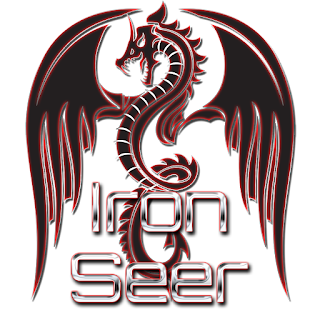The following is a secondary primer to 2nd Edition Advanced Dungeons & Dragons combat designed to give an overview and basic functions of non-lethal combat.
AD&D 2e Basics and Combat OverviewOne thing to remember going forward is that attacking an armed opponent while unarmed is excessively dangerous. Doing so will allow the armed opponent to strike first with his weapon regardless of the initiative roll. If that wasn't enough, in addition the defender will be granted a +4 to attack and damage rolls.
Note that this is not an 'attack of opportunity' as it is in later editions. Rather, it simply allows the defender with a weapon to strike the unarmed attacker first, and with a hefty bonus. It is not a 'free' attack.
Non-Lethal Combat
Punching, Wrestling and Overbearing are the three main ways of engaging in unarmed non-lethal combat. Weapons can also be used, as we will see. Each of these methods has a different system of resolution.
Punching
- A normal attack roll is made vs. the defenders normal armor class.
- The score on the attack roll, if it is successful, is compared to the Punching chart to determine the type of attack that landed.
- The amount of damage is given, along with a percentage to 'knock-out'.
- Damage is treated differently. Record punching damage separately.
- Barehanded punches cause 1 or 2 points of damage, with brass knuckles or metal gauntlets causing 1d3.
- All punching damage is subject to Strength bonuses.
- When a creature reaches 0 hp, they fall unconcious. Only 25% of punching damage is permanent, actual damage. The remaining 75% is temporary and heals 1 turn after the combat is finished.
- It is best to have the lowest successful score you can get. If you hit AC 6 on a 12, for example, you will have better results on the 'Punching' chart with more damage and higher K.O. chances with a 12.
Wrestling
Wrestling is handled very similar to Punching, with the following changes.
- A normal attack roll is made vs. the defenders normal armor class.
- The score on the attack roll, if it is successful, is compared to the Wrestling chart to determine the type of hold you manage to land on your opponent.
- A hold is broken by a throw or gouge result on the Wrestling chart, the assistance of another person or the successful use of a weapon.
- Armed combatants involved in Wrestling are limited to using Small size weapons after the first round due to arm bars and head locks.
- Damage is treated differently. Record wrestling damage separately.
- All Wrestling moves inflict 1 point of damage plus Strength modifier. Certain moves can be maintained from round to round until broken.
- Holds maintained for consecutive rounds do one extra point of damage per round they are maintained. For example, an arm lock maintained for 3 rounds would do a total of 6 damage (1 + 2 + 3) at base (plus Strength bonus each round).
- When a creature reaches 0 hp, they fall unconcious. Only 25% of wrestling damage is permanent, actual damage. The remaining 75% is temporary and heals 1 turn after the combat is finished.
- It is best to have the lowest successful score you can get. If you hit AC 5 on a 7, for example, you will have better results on the 'Wrestling' chart with more damage and higher K.O. chances with a 7.
Overbearing
Overbearing is where you dogpile something.
- A normal attack roll is made.
- For each category of size difference, the attack roll is modified by +4 (if the attacker is larger) or -4 (if the defender is larger).
- For every leg beyond the second the defender possesses, the attacker suffers -2 to their attack roll.
- Multiple attackers make 1 attack roll, with a +1 for each attacker beyond the first.
- If the roll is successful, the target is pulled down.
- The pin can be maintained from round to round with successful overbear attacks. In this case, the "prone" modifiers to combat are ignored for the dogpile.
Using Weapons in Non-Lethal Attacks
For when you have no other option or only barely care about how it turns out.
- Can only be attempted with weapons with which a non-lethal beatdown could be effected. No warhammers, maces or arrows.
- Damage is treated differently. Record non-lethal weapon damage separately.
- When a creature reaches 0 hp, they fall unconcious. Only 50% of non-lethal weapon damage is permanent, actual damage. The remaining 50% is temporary and heals 1 turn after the combat is finished.
Additional Notes on Unarmed Combat
- A creature's natural weapons are always 'usable'.
- It is possible to specialize in Punching or Wrestling. Any character of any class can do so.
- Single-Class Fighters can eventually specialize in both, but you may only start play with one specialization or the other.
- A Weapon Proficiency slot can be spent by any player character to learn Martial Arts.
- Martial Arts is functionally identical to punching but with higher damage and K.O. percentages.
- Specializations in Unarmed techniques can be continued and improved upon.
- It is possible to perform the following maneuvers (covered in the Overview):
- Called Shot
- Disarm
- Grab
- Hold Attack
- Parry
- Pin
- Pull / Trip
- Sap
Additional considerations may come into play due to whatever reasons. For bookkeeping purposes, simply note the amount of damage done by these attacks and figure it out at the end of the combat - there's no reason to break each attack into the temporary / permanent categories. Worry about it once the opponent is at 0 and then figure out if they are still alive.


No comments:
Post a Comment
What do you think about that?